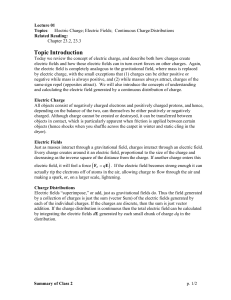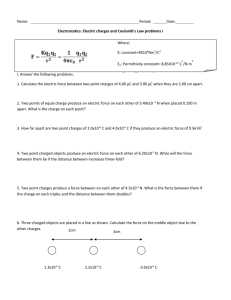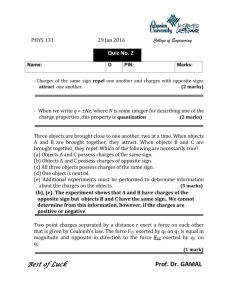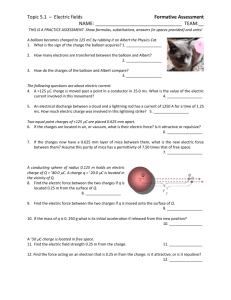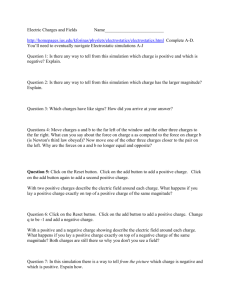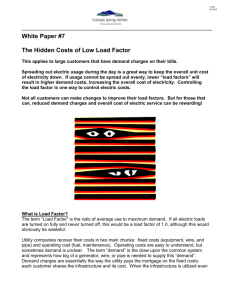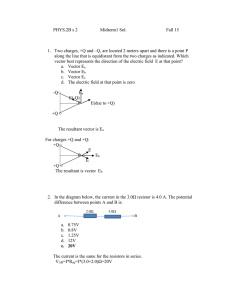Rules for using Electric forces and fields
advertisement
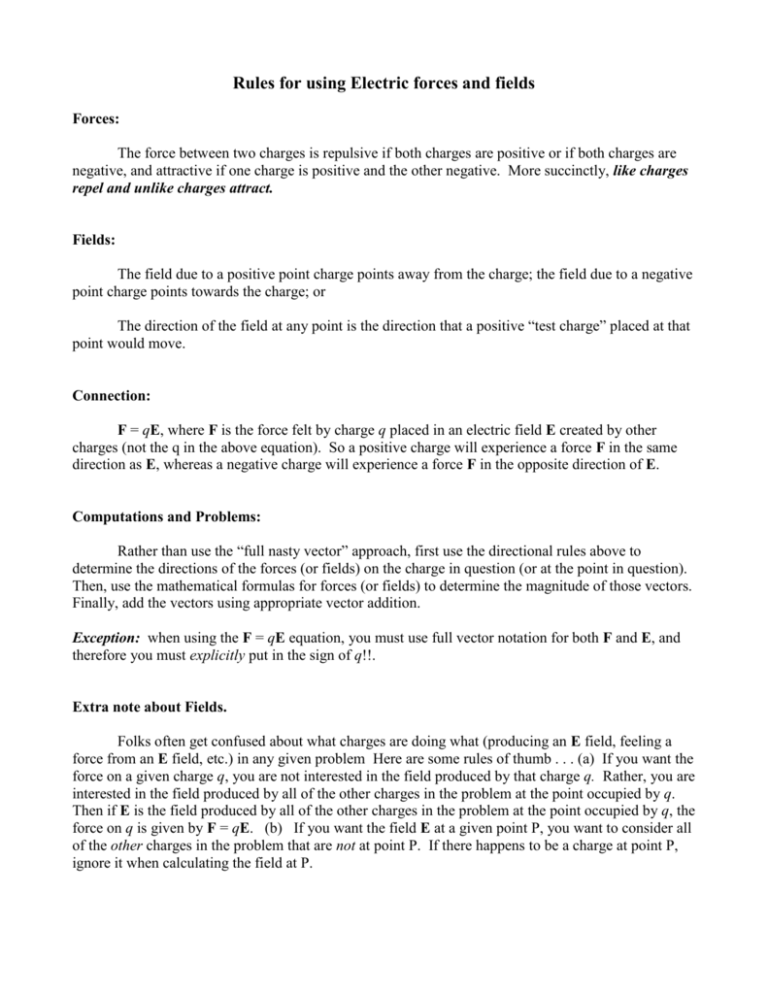
Rules for using Electric forces and fields Forces: The force between two charges is repulsive if both charges are positive or if both charges are negative, and attractive if one charge is positive and the other negative. More succinctly, like charges repel and unlike charges attract. Fields: The field due to a positive point charge points away from the charge; the field due to a negative point charge points towards the charge; or The direction of the field at any point is the direction that a positive “test charge” placed at that point would move. Connection: F = qE, where F is the force felt by charge q placed in an electric field E created by other charges (not the q in the above equation). So a positive charge will experience a force F in the same direction as E, whereas a negative charge will experience a force F in the opposite direction of E. Computations and Problems: Rather than use the “full nasty vector” approach, first use the directional rules above to determine the directions of the forces (or fields) on the charge in question (or at the point in question). Then, use the mathematical formulas for forces (or fields) to determine the magnitude of those vectors. Finally, add the vectors using appropriate vector addition. Exception: when using the F = qE equation, you must use full vector notation for both F and E, and therefore you must explicitly put in the sign of q!!. Extra note about Fields. Folks often get confused about what charges are doing what (producing an E field, feeling a force from an E field, etc.) in any given problem Here are some rules of thumb . . . (a) If you want the force on a given charge q, you are not interested in the field produced by that charge q. Rather, you are interested in the field produced by all of the other charges in the problem at the point occupied by q. Then if E is the field produced by all of the other charges in the problem at the point occupied by q, the force on q is given by F = qE. (b) If you want the field E at a given point P, you want to consider all of the other charges in the problem that are not at point P. If there happens to be a charge at point P, ignore it when calculating the field at P.

